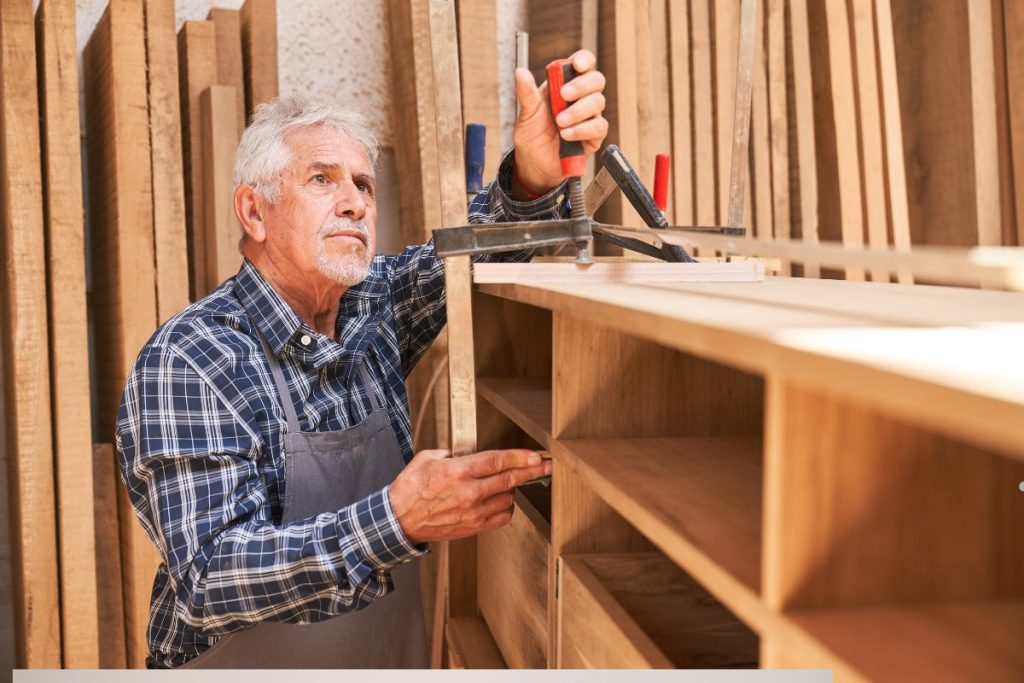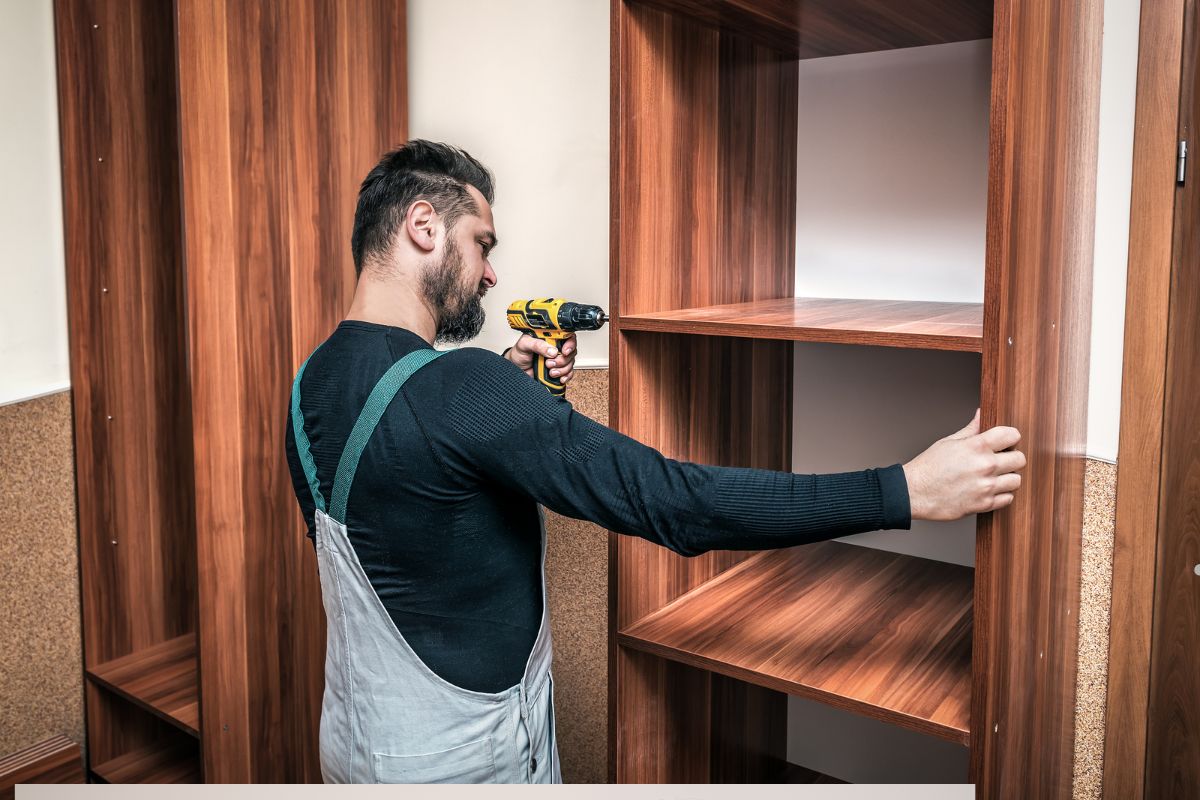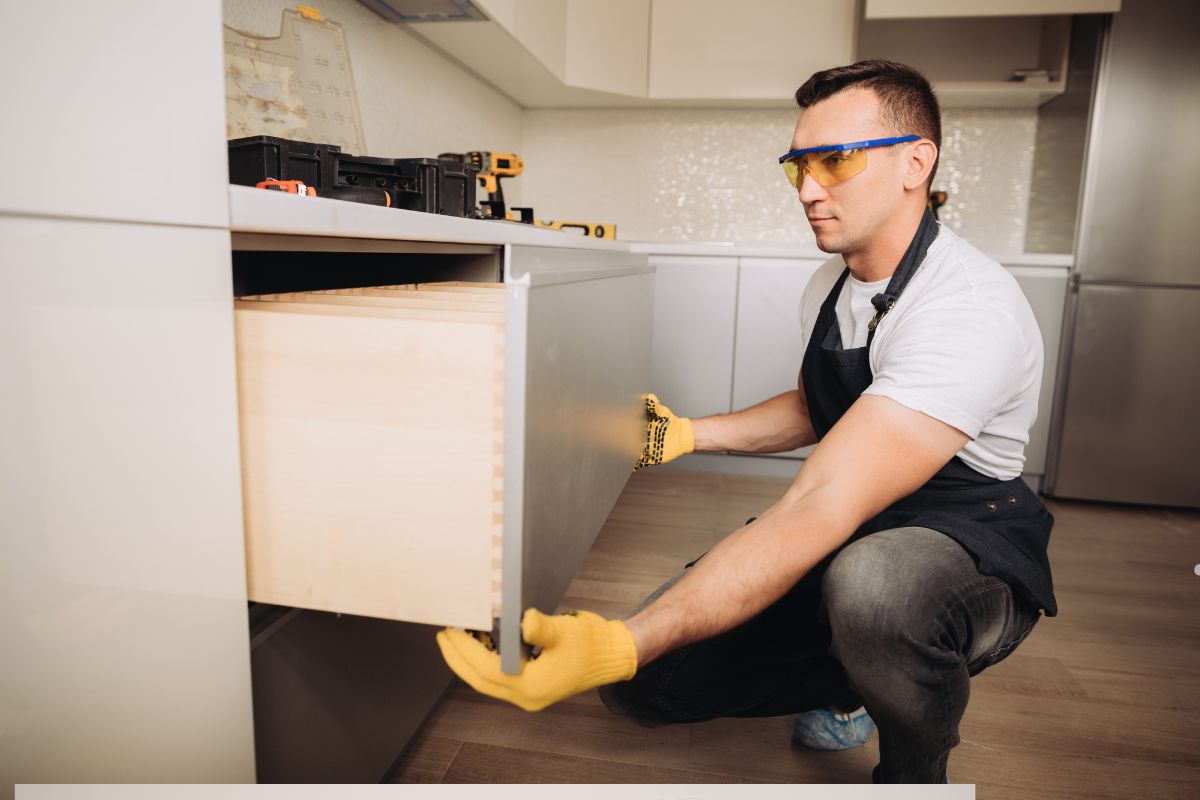
Is your favorite particle board furniture looking a little worse for wear? Don’t despair! While particle board might not have the reputation of solid wood, it can be repaired. From patching unsightly chips to reinforcing wobbly joints, this comprehensive guide will walk you through the steps to revive your furniture and save you money. Let’s get started!
The Perils of Particle Board (and Why Repairing is Worth It)

Particle board, also known as chipboard, is a common and affordable material used in a wide range of furniture, from bookshelves to TV stands. It’s made from wood chips, sawdust, and resin pressed together. While budget-friendly, it’s susceptible to certain issues. The most common problems include swelling when exposed to moisture, warping, and difficulty in holding screws securely. For tips on maintaining and repairing particle board, check out our previous blog “Right to Repair Furniture: Empowering You to Fix and Maintain Your Belongings”
- Water Damage: Particle board absorbs water easily, causing swelling, warping, and disintegration.
- Chipping: The edges and surfaces are prone to chipping, especially with heavy use or impact.
- Wobbly Joints: Over time, screws can loosen, leading to unstable and shaky furniture.
Despite these drawbacks, repairing particle board furniture is often a worthwhile endeavor. It’s more cost-effective than buying new furniture, reduces waste, and can extend the lifespan of your beloved pieces.
Gathering Your Tools and Materials
Before you begin any repair, gather the necessary tools and materials. Having everything on hand will make the process smoother and more efficient. Here’s a general list:
- Wood Glue: For bonding and reinforcing joints.
- Wood Filler: To patch chips, dents, and holes.
- Sandpaper: Various grits (e.g., 120, 220) for smoothing surfaces.
- Clamps: To hold pieces together while the glue dries.
- Drill: For tightening screws and pre-drilling holes.
- Screws: For reinforcing joints.
- Putty Knife: For applying wood filler smoothly.
- Paint or Finish: To match the existing color of the furniture.
- Safety Glasses: To protect your eyes.
Assessing the Damage
Carefully inspect the furniture to identify all areas that need repair. Determine the type and severity of the damage:
- Minor Chips and Scratches: These are the easiest to fix with wood filler.
- Water Damage: Look for swelling, discoloration, or crumbling.
- Loose Joints: Check for wobbly legs, shelves, or connections.
- Missing Pieces: This might require more extensive reconstruction.
Understanding the extent of the damage will help you choose the right repair techniques.
Insert a button or banner that says, Need Expert Furniture Repair? Call Us Today for a Free Quote!
Patching Up Minor Imperfections
Chips and dents are common problems with particle board furniture. Here’s how to repair them:
- Cleaning the Area: Remove any loose particles or debris from the damaged area.
- Applying Wood Filler: Use a putty knife to apply a generous amount of wood filler to the chip or dent. Overfill slightly to allow for sanding. Once the filler has dried, sand the area smooth to blend it with the surrounding surface. For more detailed guidance on wood repairs, check out our Wood Furniture Repair
- Sanding and Smoothing: Once the filler is completely dry, sand it smooth with fine-grit sandpaper. Start with a coarser grit (e.g., 120) to remove excess filler and then switch to a finer grit (e.g., 220) for a smooth finish.
- Painting/Finishing: Prime the filled area (if necessary) and then paint or apply a finish that matches the surrounding surface.
Dealing with Swelling and Warping

Water damage can be tricky to repair. Here’s what to do:
- Drying the Wood: Allow the water-damaged area to dry completely. This might take several days or even weeks, depending on the severity of the damage. Use a fan to speed up the drying process.
- Applying Wood Hardener: Once the wood is dry, apply a wood hardener to strengthen the weakened fibers. Follow the manufacturer’s instructions carefully.
- Filling Gaps: Use wood filler to fill any remaining gaps or cracks.
- Reinforcing Weakened Areas: Consider adding metal braces or supports to reinforce areas that have been severely weakened by water damage.
Strengthening Wobbly Joints
Wobbly joints are a common issue with particle board furniture. Here’s how to fix them:
- Identifying the Weak Points: Examine the joints to identify which screws are loose or stripped.
- Tightening Screws: Try tightening the existing screws. If the screws are stripped, replace them with longer or thicker screws.
- Adding Glue and Dowels: For a more secure repair, add wood glue to the joint and insert wooden dowels to reinforce the connection.
- Using Metal Braces: Install metal corner braces or mending plates to provide additional support to the joint.
Is Your Furniture Beyond Repair? Call Us for Professional Assessment and Replacement Options!’
Protecting Your Particle Board Furniture
Prevention is key to extending the life of your particle board furniture. Here are some tips:
- Sealing the Edges: Apply edge banding or sealant to the exposed edges of the particle board to prevent water absorption.
- Avoiding Moisture: Keep your furniture away from sources of moisture, such as leaky pipes or humid environments.
- Using Furniture Pads: Place furniture pads under the legs to protect the floor and prevent scratches.
- Regular Maintenance: Tighten screws and clean your furniture regularly.
Extending the Life of Your Furniture
Repairing damaged particle board furniture is a rewarding and cost-effective way to extend its lifespan and reduce waste. By following the steps outlined in this guide, you can revive your favorite pieces and enjoy them for years to come.
Frequently Asked Questions About Particle Board Repair
Can I use regular wood glue on particle board?
Yes, wood glue is generally suitable for particle board repair. However, consider using a specialized glue designed for porous materials for best results.
How do I prevent the filler from cracking?
Apply thin layers of filler and allow each layer to dry completely before applying the next. Also, avoid applying filler in extremely dry or humid conditions.
What’s the best way to paint particle board?
Prime the surface with a quality primer designed for particle board. This will help the paint adhere better and provide a smoother finish. Sand lightly between coats of primer and paint for the best results. Contact us for expert advice or assistance with your furniture restoration projects!
